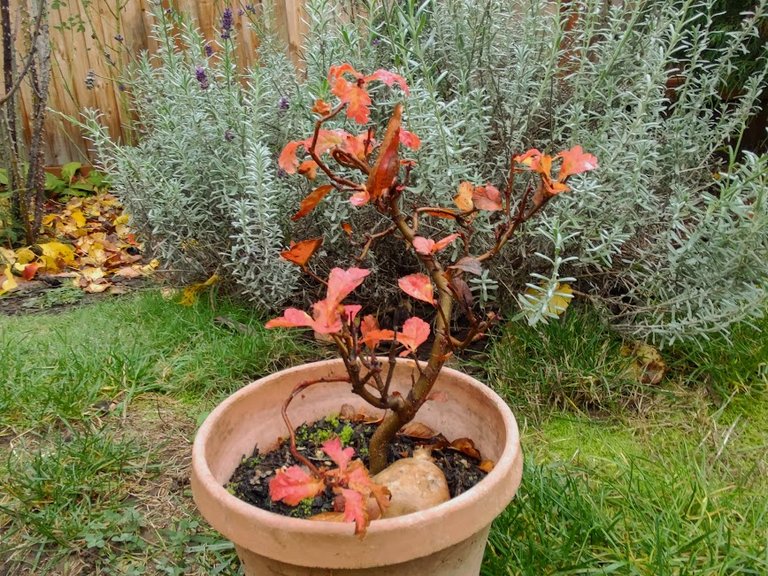
For those of you who love trees, allow me to entreat you with a late holiday gift.
Follow me on this journey as I display the early beginnings of this tree in infancy to the current developments in its growth adventure.
The Black Hawthorn, a true native species of the Pacific Northwest USA, yet less thorny and more colorful than its more invasive cousins within the same species. It also has slightly larger rounded lobed leaves.
In front of the lavender bush starting to wear its winter white sweater for winter (lavender leaves develop a soft white skin in winter), I felt was a fitting backdrop in late November to photograph this potted tree. This Hawthorn's leaves sport gradients of pink, peach, and orange umber.
As a young tree swollen from weeks of recent rain, the hardened bark regains its very swollen and supple state, and will mark with scars if scratched. Eventually this tree will develop a hardened coating over its bark in Summer, almost like a smooth paper cement crust. In Fall and Spring, the bark can become soft again, allowing for more greenwood leafbuds to form.
Historical Info About This Tree:
ID: 0076
Nickname: Not Named Yet
Type: Black Hawthorn
Age: 3 years
Grown: from bare root, nursery stock
Last repotting: February 19, 2023
Wired: Summer 2023
Origins
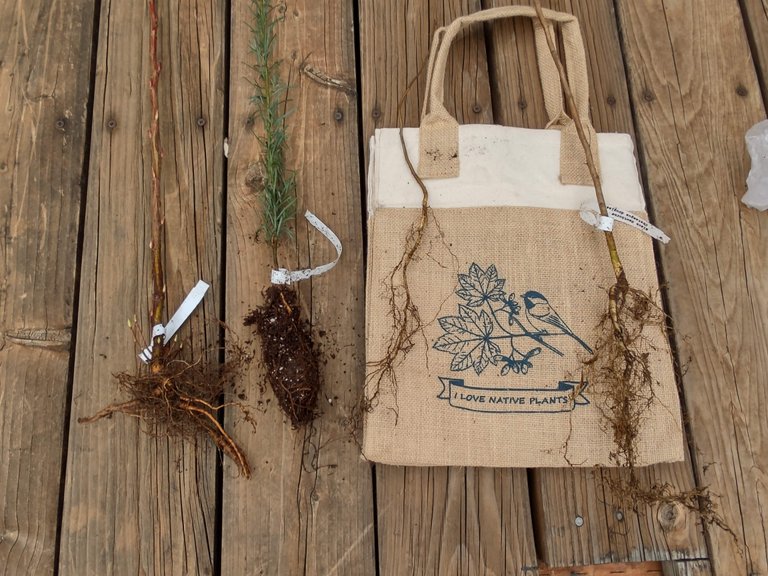
Looking back through my photo collections, I was able to find this young tree in its bare root form, as it arrived freshly unwrapped from a native plant sale in February 2023. They were delivered with this charming burlap gift bag as well.
The little whip, third from the left, seemed small and pathetic. Likely only a year or two old from a seed.
Initially, this tree needed no real special treatment. All I had to do was choose a suitable pot, and fill with my garden made compost. Bare root native trees, I tend to have better results when I give them natural soil, as it most closely resembles the texture and nutrients it would find in nature. I believe this gives young, weak trees a good boost for about a year.
In later years, bonsai trees require rocky bonsai soil to form the spreading roots necessary to support many branches, while existing in the confined walls of a small pot. Too much soft organic soil tends to fool the tree into thinking it only needs to grow one thick taproot search way down deep for water, whereas porous rocky soil trains the tree to form many spreading roots to catch rainwater from the shallow surface.
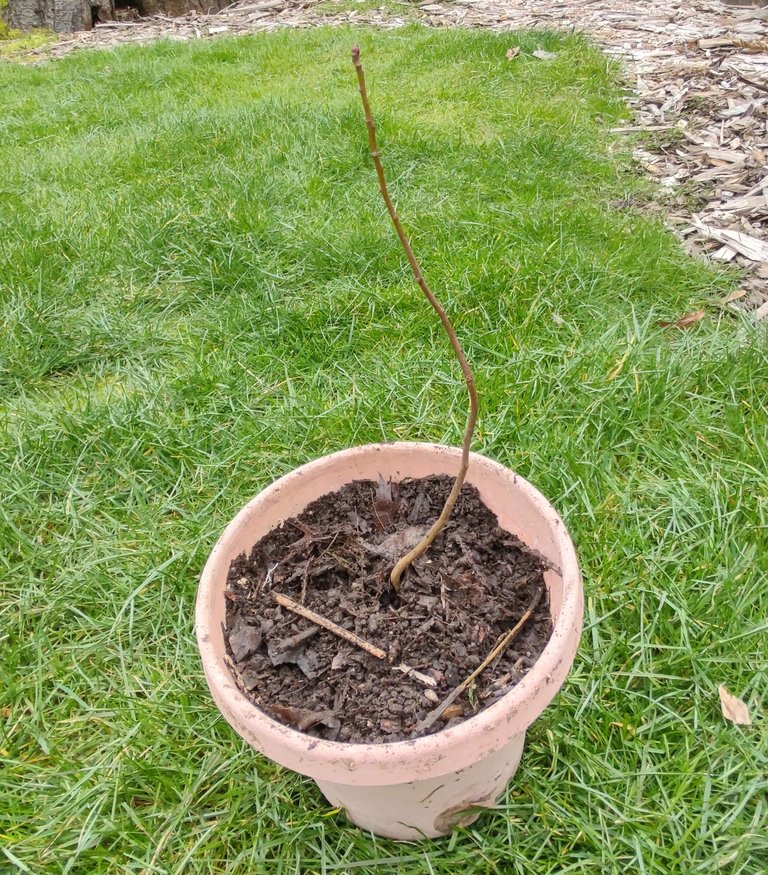
Here it is potted up.
Again, I was very pleased that this little whip already had a natural bow shaped curve.
Hawthorn branches have a tendency to form many lateral branches. Shorter branches will often curve upward with new shoots, and longer branches will extend out and downward. Evolutionary traits such as this allow each branch to find light perfectly away from other branch clusters. It gives it a unique form; and uniqueness is always beautiful.
A Year Later: A Spring In Its Step
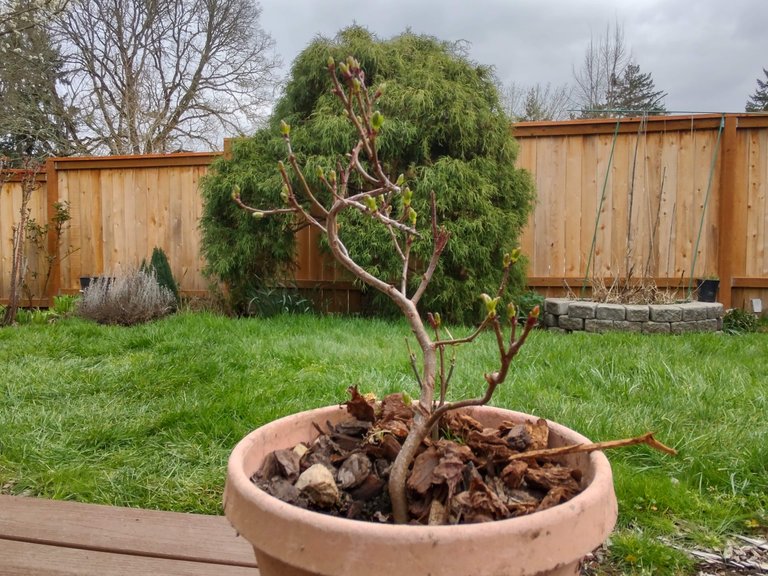
In late March of 2024, it started to bud out in all directions.
This is when the tree is most full of life. In Autumn, and Winter, the trunk would have thickened up. In Spring energy is going out in all directions to create new cell tissues to form new stems, leaves, and roots using whatever was stored up inside the trunk.
There is some slight scaring on the trunk visible from where a wire was recently removed. That was caused by the swelling of the trunk over winter, which can fold over the wire over time. The wire served its purpose, and helped the tree conform to a slightly more curvaceous trunk form.
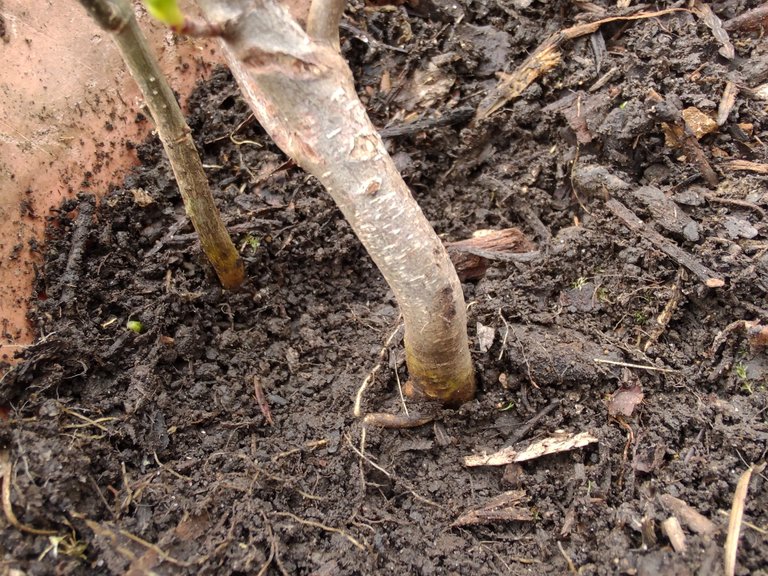
Looks as though I had planted a sibling tree in the same pot. Maybe it formed from a cut off root. I call these happy coincidences mentor trees or foster trees when planted in this fashion, as the larger tree helps the younger tree to absorb excess water from the soil. They actually both work together to help the soil develop balance with the roots and the micro organisms and nutrients within, better than one tree can do alone in a pot.
The photo here was meant to show how much the trunk has thickened up comparatively to when it started.
Wiring Branches
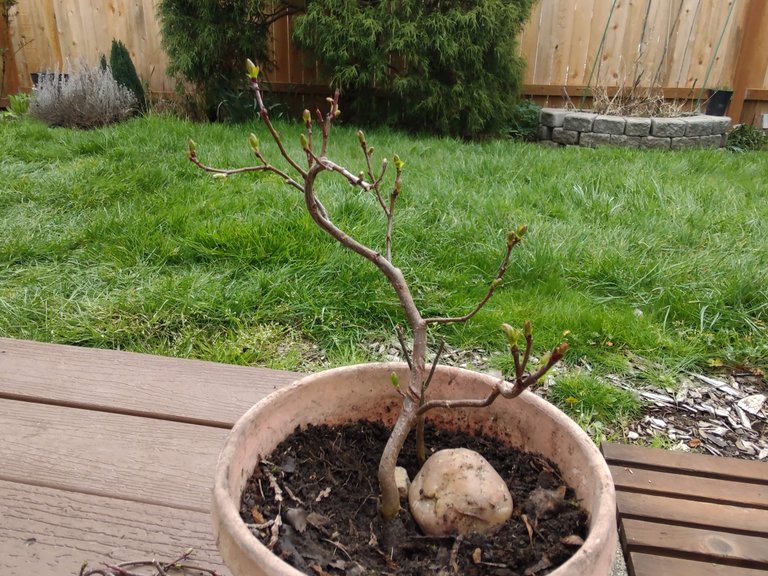
Take a good look at the photo above, as it relates directly to the photo below.
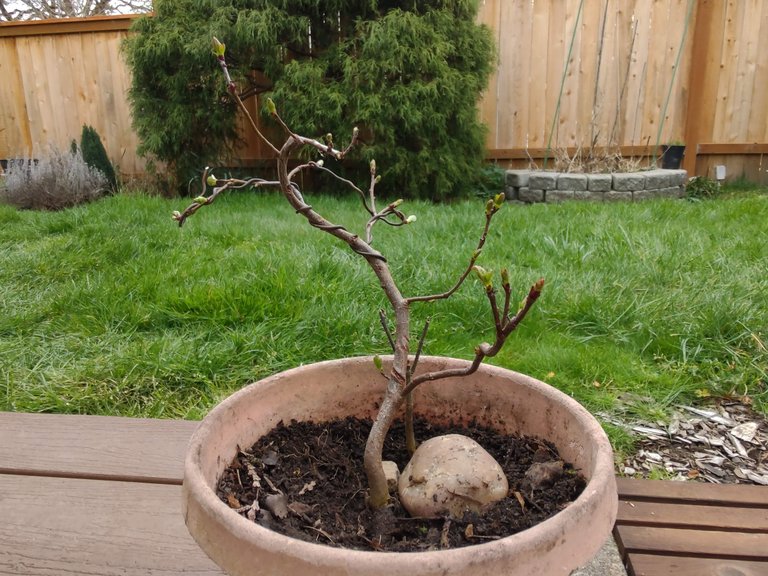
Not a whole lot was changed.
The second highest branch was mostly altered, opening it out sideways.
When I end up with a bit of extra wire on the end, such as this case, often I will break the bonsai best practices rules, and simply hook the excess wire onto a lower nearby branch. Here the wire was strong enough to press the middle branch out slightly, which is ideal, and won't mark up the thin stems as much.
A Few Weeks Later...

Quite the transformation when the tree develops on its own.
The leaves are a bit large for the proportions of this tree. Over time, as it forms more secondary branches, I think the leaves each subsequent year might form a bit smaller.
Again, I can't express how happy I am that this variety of Hawthorn has practically no thorns. Thorns on Hawthorns are hidden under leaves and sharp enough to draw blood even if the tree is handled gently and carefully.
In Summer, Gotta Wear Shade
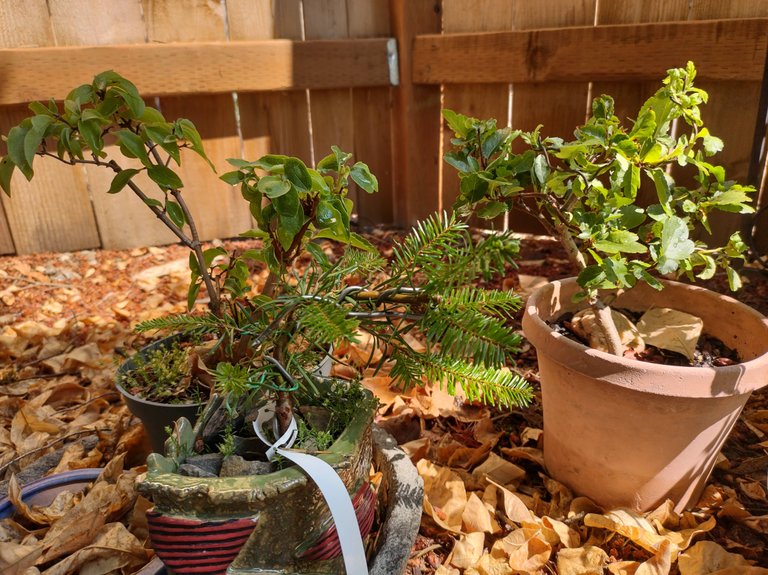
When temperatures skyrocketed for weeks without clouds or rain, I moved all the new young native trees into the shady part of my yard. This mimics the type of environment baby trees prefer when forming underneath tall trees in the thick mulch of a forest floor.
While the tall mature trees can pull water from deep roots, to avoid leaf burn, young trees will stress and burn very quickly in full sun. Under the cool shade, they still get far more sunlight than they actually require. Especially after they have already leafed out, the tree will not become leggy, because it doesn't produce any new leaf stems until next Spring, or possibly in Autumn.
Back To The Present Time
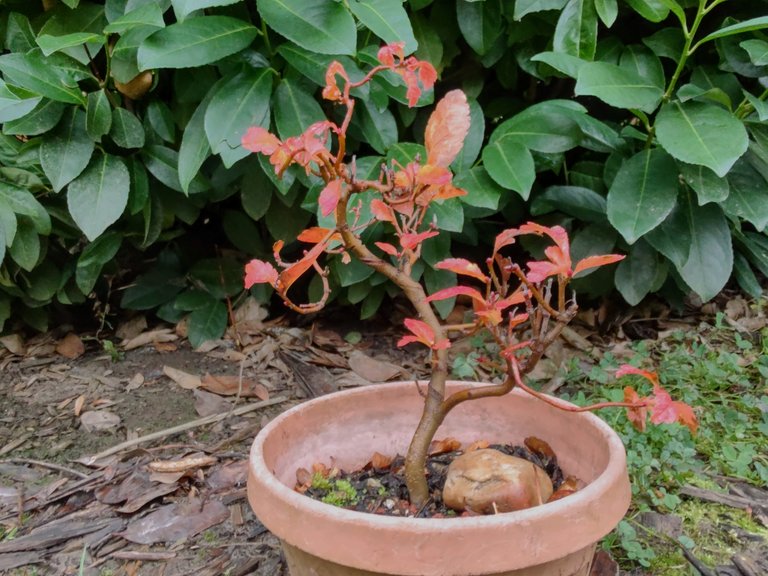
Here were are again with the tree in late November 2023.
Under the right light, the leaves are almost red. The little faded pink pot certainly complements the leaf colors.
Isn't it interesting how the bends in the branches seem to dance along the same lines made by the leaf edges?
As I improve my bonsai artistry abilities, I hope I can further help sculpt this tree into a design that accentuates movement lines, to give the illusion that the tree is alive with these motion shapes.
Photography, paintings, and sculptures are so much more interesting when they appear to be moving, especially forward and away. That is one reason bonsai are often positioned so that the front of tree is angled so it appears to be bowing towards the viewer. Any time the art pulls us in to want to interact with it, we gravitate towards it. The impact it makes on the viewer, it therefore moves us as well.
Hopefully I made an impact on you, my friends, today. Enjoy the fruits of your holidays, and be merry with your family and friends this time of year.
Photos in this post are all #originalworks by @creativetruth, unless stated otherwise.


Back to a classic bonsai post for you 👍 I like watching you shape the bonsai with wires. Probably because it is not something I have ever done myself. I think people are always drawn to things they lack... skills, experiences, even personality traits. And this post definitely drew me in. I love the shots with the red leaves and the
photo. At first I saw the foliage from the larger tree along the fence and thought it was on the hawthorn 😆 then I saw the lovely green buds. Pretty little tree this hawthorn 🙂